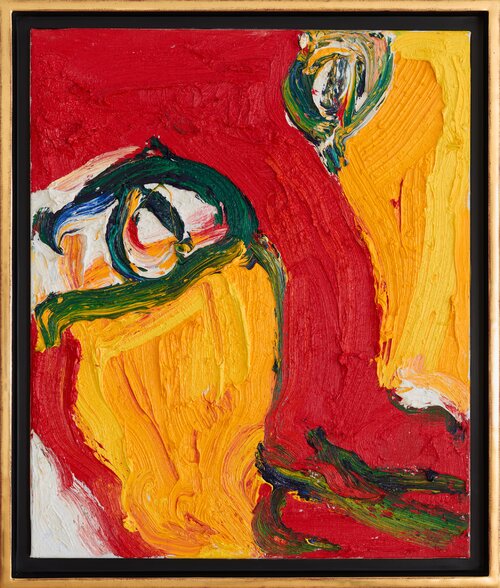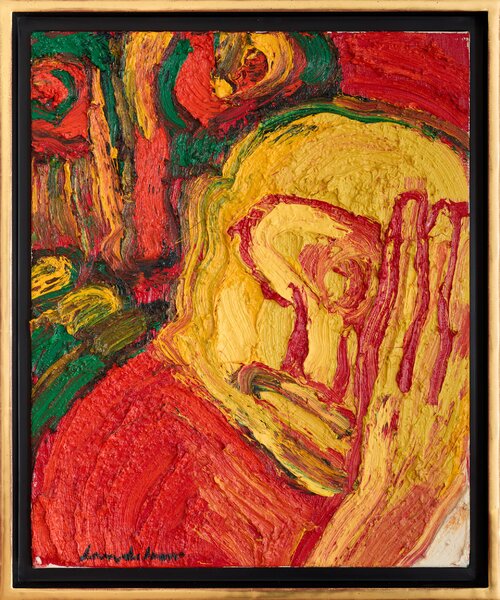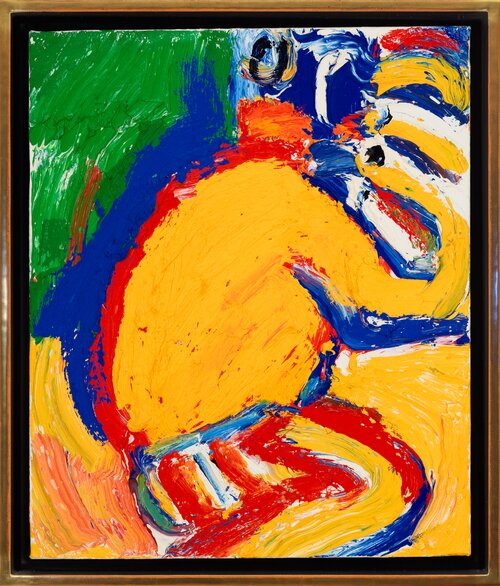
Bengt Lindström
Sweden (1925 - 2008)Lindström was born in 1925 at Storsjö kapell, Härjedalen, Sweden. He was only three days old when Sámi King Kroik, his godfather, administered the 'Baptism of the Earth', where the child is placed between two roots of a tree to grant him protection from the Gods. Bengt grew up in the vast landscape of Sápmi (sometimes referred to as Lapland), with mountain ranges, glistening lakes and endless forests. He went to school in Härnösand, where he started writing short science-fiction stories, became an athlete and started to draw and paint. The Sámi people, as well as local lumberjacks, would tell Bengt about the tales and legends of the Great White North. All this created the basis for the major influence of Sámi culture and traditions in Bengt's work.
In 1944, he moved to Stockholm to study under the Swedish painter Isaac Grünewald. He also participated in drawing lessons given by Aksel Jörgensen at the Copenhagen Fine Arts School in Denmark. In 1946, Bengt travelled to the United States to study at the Art Institute of Chicago and was inspired there by the work of De Kooning. In 1947, he moved to Paris, where he studied under the French painters André Lhote and Fernand Léger. Bengt was granted a scholarship by the Swedish magazine Aftontidningen, which helped him move into a workshop in Arcueil, France. In 1953, he returned to Paris, to a workshop in Rueil-Malmaison, where he continued the development of his unique style of painting. Soon after, he started collaborating with the Rive Gauche Gallery in Paris and Tooth & Sons Gallery in London. He developed his most known figurative art with masks, gods and monsters in France at Savigny-sur-Orge. As from 1968, he started dividing his time between his workshop in France and his atelier in Sundsvall, Sweden.
Lindström was influenced by and often based his work on the ethnic traditions of the Nordic world and Sámi culture. He was also influenced by the paintings of the COBRA group, active in the period Bengt studied in Copenhagen. COBRA was represented in Copenhagen by Asger Jorn and includes the famous artist Karel Appel, artists who were about 10 years older than Lindström.Unlike the COBRA group, Lindström used his paint by the bucket, with heavy applications of mostly primary and secondary saturated colours, using his fingers as well as big brushes.
'I work with extremely pure and intense colours. When I juxtapose them, it often gives the impression of 'having no soul', isn't that so? something too decorative. Thus red against green, against blue may create harmonies which must not become too beautiful or too pleasant. No, something more must be added to the work, it must have a soul, yes, a soul you can feel, in order to be moved.'
His work became internationally well respected because of its powerful presentation of human themes, depicted in vivid colours Lindström is probably best known for his large works, such as oil and acrylic works, mural paintings and colourful sculptures, but he used a great variety of media, including glass, dry point, tapestries, graffiti art, lithography and engraving. His most famous sculpture is probably the massive Y-sculpture at Midlanda Airport north of Sundsvall, Sweden.


